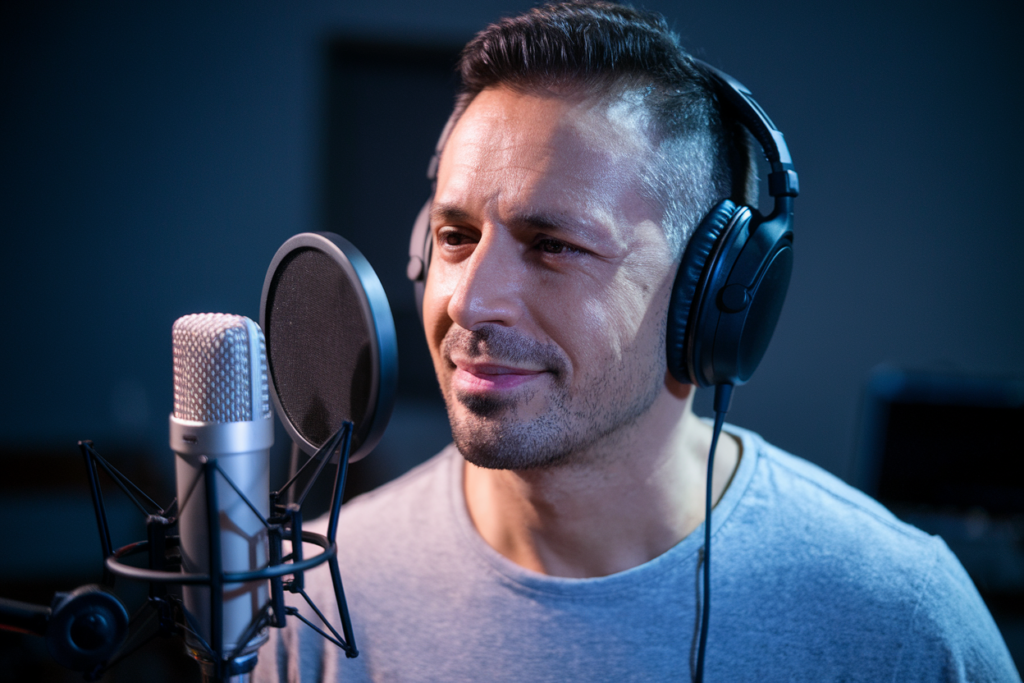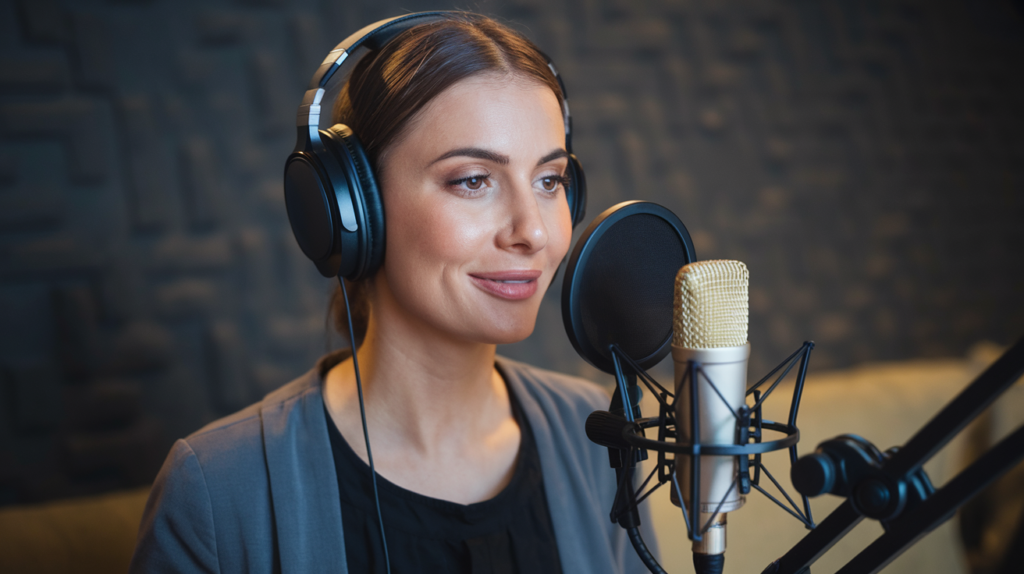Key Takeaways
- Diverse Accents Enhance Media: Turkish accents vary significantly across regions, adding unique characteristics that enrich films, music, and news content.
- Istanbul Turkish as Standard: Istanbul Turkish is the most commonly used accent in mainstream media due to its clear and neutral tone, appealing to a wide audience.
- Regional Nuances Matter: Accents from Northern Anatolia or the Aegean region bring distinct flavors that enhance storytelling authenticity and emotional engagement.
- Impact of Media on Accents: Film and social media play crucial roles in shaping perceptions of regional accents, influencing how they’re adopted by broader audiences.
- Importance of Cultural Representation: Incorporating various Turkish accents fosters cultural representation and appreciation for Turkey’s linguistic diversity in media projects.
- Engaging Audience Connection: Understanding regional accents enhances audience relatability and emotional connection, making narratives more immersive and engaging.
Ever wondered why some Turkish accents sound so different in media? Understanding the differences in Turkish accents can unlock a richer experience when consuming films, music, or news. With Turkey’s diverse regions and cultures, each accent brings its own flavor to the language, affecting how stories are told and perceived.
In a world where media shapes our understanding, recognizing these nuances isn’t just interesting—it’s essential. Whether you’re a language learner or simply curious about cultural expressions, grasping these variations enhances your appreciation of Turkish content. Dive into this exploration of Turkish accents and discover how they influence communication and storytelling across various platforms.
Overview of Turkish Accents
Turkish accents vary significantly across different regions, each contributing unique characteristics that enhance media experiences. The rich tapestry of Turkey’s culture and geography influences how people speak, making these accents vital for voiceovers in films, television, and other forms of media.
Istanbul Turkish serves as the standard accent often used in mainstream media. It’s clear and neutral, appealing to a broad audience. However, regional accents like those from the Aegean or Southeastern Anatolia add distinct flavors. For example, the Aegean accent features softer consonants and elongated vowels, which can evoke a sense of warmth and familiarity.
Voice actors must understand these nuances to connect with audiences effectively. Incorporating regional accents can provide authenticity in storytelling. Whether it’s a dramatic film set in rural Anatolia or a light-hearted commercial featuring Istanbulites, using the appropriate accent enhances believability.
Moreover, voice talent skilled in diverse Turkish accents can offer more than just language; they bring cultural context into their performances. This depth enriches the narrative and captivates viewers or listeners.
Consider how your project might benefit from employing various Turkish accents through voiceover work. Tailoring your content with specific regional tones can resonate more deeply with target audiences while reflecting Turkey’s vibrant linguistic diversity. Engaging voice artists will help capture this essence beautifully, ensuring your message is not only heard but felt as well.
Key Differences Across Regions
Understanding the regional accents of Turkish can elevate your media projects, especially when considering voiceovers. Each accent carries its own charm and cultural significance, making it essential for voice talent to master these nuances.
Northern Anatolian Accents
Northern Anatolian accents feature a distinct and melodic tone. These voices often resonate with listeners due to their warmth and familiarity. You’ll notice a unique pronunciation of certain vowels that sets this accent apart from others in Turkey. Incorporating this accent into your projects adds authenticity, connecting directly with audiences who recognize the local flavor.
Southern Anatolian Accents
Southern Anatolian accents provide a rich tapestry of sounds characterized by their expressive intonation. This region’s dialects often reflect emotional depth, ideal for storytelling in films or commercials. The way words blend together creates an inviting atmosphere that engages viewers or listeners on a personal level. Using these accents can enhance the relatability of your characters, drawing audiences into the narrative.
Aegean and Marmara Accents
Aegean and Marmara accents are known for their clarity and fluidity. They embody the vibrant life of coastal areas while maintaining an approachable sound perfect for mainstream media consumption. Voice actors using these accents can deliver messages with precision and elegance, appealing to both local and international audiences alike. Their versatility makes them suitable for various genres—from documentaries to animated features—ensuring that your content resonates across diverse demographics.
Utilizing these regional differences not only enriches your content but also showcases Turkey’s linguistic diversity at its finest. Embracing various Turkish accents enhances engagement, ensuring your audience connects deeply with every piece of storytelling you present through skilled voiceover performances.
Influence of Media on Accents
Media plays a crucial role in shaping and spreading accents across Turkey. It not only showcases diverse regional dialects but also influences how these variations are perceived and adopted by audiences.
Film and Television Impact
Film and television serve as powerful platforms for accent exposure. When you watch a Turkish film or series, you encounter various accents that reflect the characters’ backgrounds. Istanbul Turkish remains dominant due to its neutrality, yet films set in regions like Southeastern Anatolia bring local accents to life, enhancing authenticity. This connection fosters relatability and emotional engagement with viewers who recognize their own speech patterns represented on screen.
Voice actors must master these regional nuances to deliver performances that resonate deeply with audiences. By embodying specific accents, they breathe life into characters, making stories more compelling. A skilled voiceover artist can transform dialogue into an authentic experience that captures the essence of each locale.
Social Media Trends
Social media amplifies the influence of different Turkish accents through platforms where content creators share videos, podcasts, and live streams. You’ll find influencers using their unique regional dialects to connect with followers on a personal level. These interactions often lead to a broader acceptance of various accents among younger generations who may adopt them in casual conversations or creative projects.
As trends evolve, voice talent leveraging social media can showcase their ability to switch between accents seamlessly. This versatility not only enhances their appeal but also demonstrates cultural awareness—an essential trait for engaging storytelling in any medium.
Incorporating diverse Turkish accents into your media projects enriches narratives while appealing to wider audiences. Whether through film or social media content, embracing these differences elevates communication and strengthens connections within Turkey’s vibrant linguistic landscape.
Importance of Understanding Accents in Media
Understanding accents in media plays a crucial role in enhancing audience engagement and emotional connection. Different Turkish accents provide layers of authenticity that resonate with viewers, making content more relatable and immersive.
Audience Perception
Accents shape how audiences perceive characters and narratives. When voice actors embrace regional dialects, they create a genuine atmosphere that draws listeners in. For example, an Aegean accent might evoke warmth and familiarity, while a Northern Anatolian tone can add melodic charm. This attention to detail strengthens the bond between the story and its audience, ensuring that viewers feel represented.
Cultural Representation
Cultural representation thrives on diversity; this is especially true for Turkish media. By incorporating various accents, voice artists reflect Turkey’s rich tapestry of cultures. Each region brings unique expressions and emotions to storytelling, enriching narratives with authenticity. Voice talent skilled in these nuances allows for deeper exploration of themes and characters while honoring local traditions. This commitment to cultural representation not only elevates the quality of content but also fosters greater appreciation among audiences for the country’s linguistic heritage.
Conclusion
Embracing the variety of Turkish accents in media opens doors to richer storytelling and deeper emotional connections. As you explore films music and other content you’ll find that each regional accent adds a unique layer of authenticity. This diversity not only enhances your viewing experience but also fosters a greater appreciation for Turkey’s cultural heritage.
By recognizing the nuances in accents you can better understand and engage with characters and narratives. Whether you’re a language learner or simply an enthusiast of cultural expressions integrating these accents into media projects will undoubtedly enrich your connection to Turkish content. Celebrate this linguistic tapestry as it reflects the heart and soul of Turkish culture inviting you to experience its beauty fully.
Frequently Asked Questions
What are the main Turkish accents discussed in the article?
The article highlights several Turkish accents, including Istanbul Turkish, which is standard for mainstream media, and regional accents from areas like Aegean and Southeastern Anatolia. Each accent contributes unique characteristics that enhance storytelling and communication.
Why is understanding Turkish accents important?
Understanding these accents enriches the experience of consuming Turkish films, music, and news. It allows language learners and cultural enthusiasts to appreciate the nuances that reflect Turkey’s rich regional diversity.
How do regional accents affect media performances?
Regional accents add authenticity to voiceover work by connecting more deeply with audiences. Skilled voice talent can evoke emotions and enhance narratives through their mastery of these diverse dialects.
What impact does media have on Turkish accents?
Media platforms like film and television expose audiences to various Turkish accents. While Istanbul Turkish dominates, local films bring regional dialects to life, fostering emotional engagement among viewers.
How do social media trends influence accent usage in Turkey?
Content creators on social media often use their unique regional dialects to connect with followers. This trend encourages younger generations to adopt different accents in casual conversations or creative projects.
How can incorporating diverse Turkish accents improve storytelling?
Incorporating various regional accents creates a genuine atmosphere that resonates with viewers. It enhances audience engagement by reflecting Turkey’s linguistic diversity and cultural representation within narratives.







